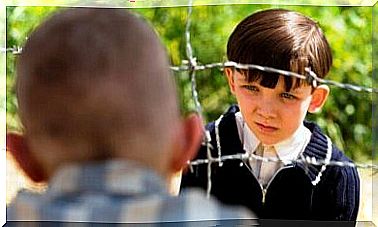Saying “no ” In A Positive Way
With new ideas about education and positive discipline, the “no” so often used by our parents and grandparents came to be seen as almost demonic. This has the consequence that many parents feel lost, not knowing what formulas to use to establish standards. They are therefore looking for a way to impose their criteria, but without giving the impression of being authoritarian and overly restrictive parents. This is why we will try through this article to learn how to say “no” in a positive way.
It is better that the “no” that our children deserve, when we believe that we must oppose one of their desires, is an unreasoned one, based on good motives. There are also intermediate degrees between no and yes. We can suggest, for example, that they do what they want to do later, when the circumstances are more favorable. We can also offer them other alternatives that we think are appropriate and that may be suitable for them.
The basic question is to help our children so that it is they who, little by little, self-regulate and learn to function according to certain rules. Although this is a long and constant process, we cannot forget that these are children and that we are responsible for their education. Patience, because it can be a path as beautiful as it is long.
Our children’s curiosity causes us anxiety
Children are curious by nature, the downside is that part of that concern seems to get lost when we become adults. Maybe the ‘no’s’ restrict this curiosity because, in a way, it bothers adults, while the way of teaching in school, based on repetition and repetition, is not. more of a big help.
It is also very difficult to find the balance between allowing our child to explore and release his curiosity while keeping the fear that something might happen to him at a distance. If we are very nervous and let our anxiety dominate, it is likely that saying “no” is our main recourse and that we shout “don’t do that…”, “don’t go up there…”, “don’t touch to that…”. So we don’t say “no” in a positive way.
We can also try to make an effort, but this effort also makes us build up anxiety. An anxiety that we often free ourselves from by shouting: through this “no!” that frightens and disorients our children. They think, “Why are you yelling at me if I asked you for permission before and you gave it to me?”
in their “stupidities” and their exploration . That we make a realistic assessment of what is a real danger: it doesn’t matter if he falls on the grass, which would be different if he fell down a staircase. Let’s follow them, but give them a distance. Let’s slowly increase the freedom we give them and grow in the confidence we have in their judgment as they grow older.
Say “no” less often and explain more why
Saying “no” is often too much. If we don’t want them to touch something, we can say: “it cuts”, “it’s dirty”, “it’s mine, your father or your brother”. We can also explain the function of things: “chairs are for sitting”, or “things, animals and plants should be treated with respect and care”, and explain the reasons for our actions: “I speak or I’m doing something, when I’m done I’ll take care of you ”. Our children will understand better this way what is going on, at least much better than with a blunt “no” without explanation.
Routine and rules also help to say “no” less often, for example: “it’s time for the bath and then to bed because tomorrow there is school”, “it’s time to go home because it is late and I have to prepare dinner ”,“ after eating, you can have dessert, because your body will thank you for having previously fed it with foods that will make it really strong ”.
And we could give many examples allowing children to acquire a criterion. It is also useful to explain the consequences of what they do, for example, “if you hit your brother or your boyfriend, he is likely not to want to play with you afterwards” or “studying will help you. to pass your exam ”or“ in an orderly and tidy room it will be easier to find what you are looking for ”.
Alternatives, a way to say “no” in a positive way
While the “no” is a clear denial, the alternatives are options that will also help our children make their own decisions in the future. They will face us sometimes in a kind of struggle, and even though we are the adults and always have the last word, forcing our children to undergo a system, without leaving any small space for them to defend their ideas and change our points. of sight is an attitude which will not bring anything positive to their growth. It is obvious that sometimes putting themselves in their shoes will be tiring, that they will exhaust our patience with their energy, but we will help them more with a different attitude, even if it requires more of us.
It is useful to offer alternatives such as: “The knife is very sharp, but you can help me season the salad” or “it’s raining, it’s cold to go out, but we can play, cook something or do something. a puzzle inside ”,“ you can play 5 more minutes and when we get home I’ll tell you a story ”. For example, offering an option can help us make it easier for the child to go to bed: “it’s time to go to bed, but you can bring anything you want to bed, a stuffed animal, a doll , a book, etc ”.
And when we have to say “no”
Let’s put ourselves in their shoes, speak firmly, but without shouting, and use his name to address him. There is no reason for us to be blunt or rude, to insult or say things we can repent of. Let’s change our speech. For example, “I’m angry because you broke this or did that, NO, I didn’t like what you did”.
Let’s talk about actions and don’t tell the child that what he has done at some point defines him. For example: “you did something stupid” and not “you are stupid” or “you often take too long to do things” rather than “you are lazy”. Let’s lead by example and be consistent. For example, if we promised something, like playing a while after brushing our teeth: “you didn’t want to brush your teeth, so there won’t be any fuss” or “we won’t do the puzzle because we didn’t get back from the park early enough ”.









